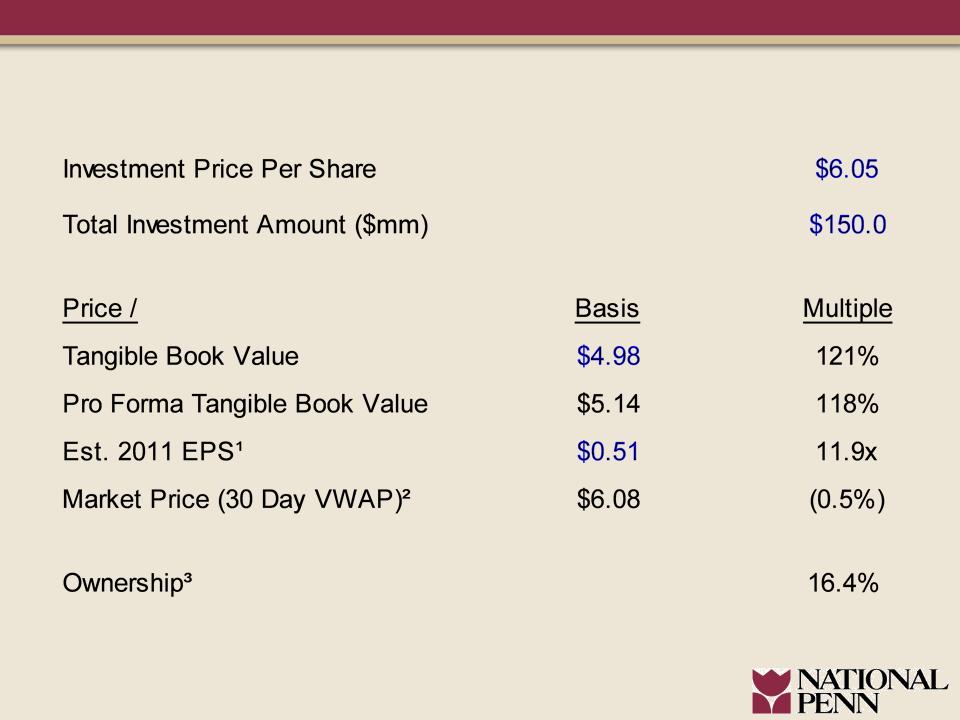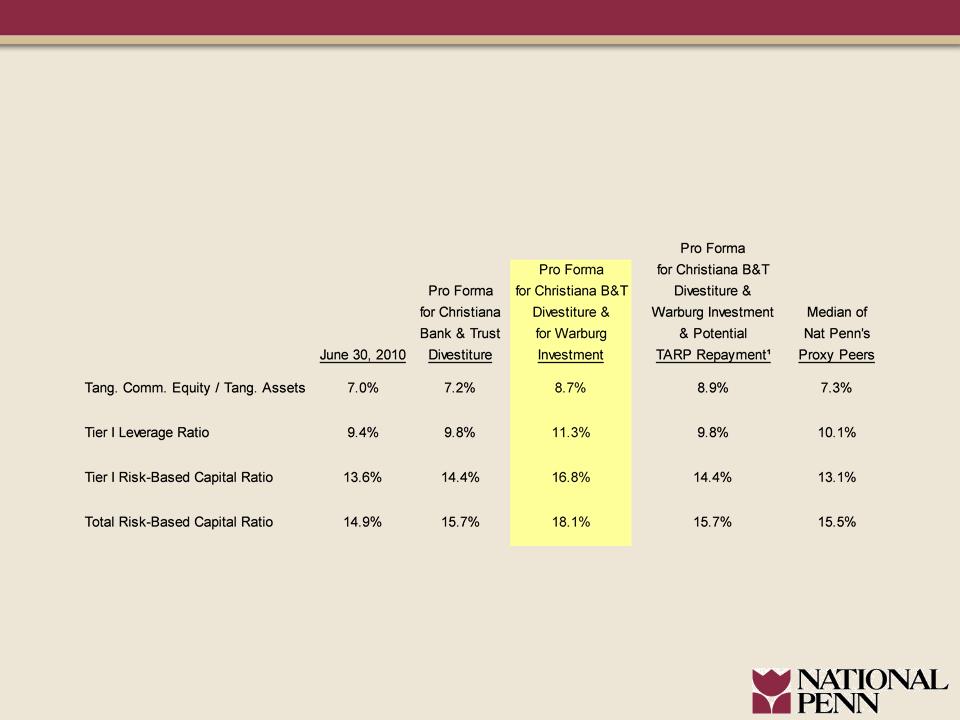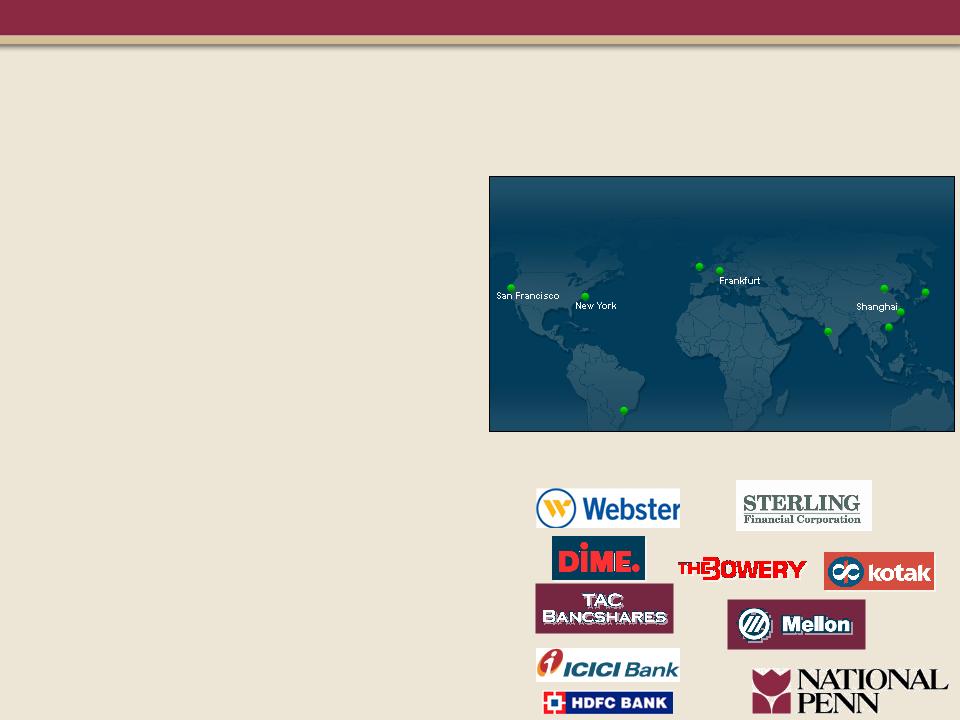2
This release contains the non-GAAP measure of tangible book value, which excludes from total equity goodwill,
intangible assets and preferred stock. Banking and financial institution regulators also exclude goodwill and intangible
assets from shareholders’ equity when assessing the capital adequacy of a financial institution. Tangible book value
provides a method to assess the level of tangible net assets on a per share basis. .
Non-GAAP Financial Measures
Safe Harbor Regarding Forward Looking Statements
This presentation contains forward-looking information about National Penn Bancshares, Inc. that is intended to be
covered by the safe harbor for forward-looking statements provided by the Private Securities Litigation Reform Act of
1995. Forward-looking statements are statements that are not historical facts. These statements can be identified by
the use of forward-looking terminology such as “believe,” “expect,” “may,” “will,” “should,’’ “project,” “plan,’’ “goal,”
“potential,” “pro forma,” “seek,” “intend,’’ or “anticipate’’ or the negative thereof or comparable terminology, and include
discussions of strategy, financial projections, guidance and estimates (including their underlying assumptions),
statements regarding plans, rationales, objectives, expectations or consequences of proposed or announced
transactions, and statements about the future performance, operations, products and services of National Penn and
its subsidiaries. National Penn cautions investors not to place undue reliance on these statements.
National Penn’s business and operations are subject to a variety of risks, uncertainties and other factors.
Consequently, actual results and experience may materially differ from those contained in any forward-looking
statements. Such risks, uncertainties and other factors that could cause actual results and experience to differ from
those projected include, but are not limited to, increased capital requirements mandated by National Penn’s
regulators, National Penn’s ability to raise capital, variations in interest rates, continued deterioration in the credit
quality of certain loans, the effect of credit risk exposure, declines in the value of National Penn’s assets, recent and
ongoing changes to the state and federal regulatory schemes under which National Penn and other financial services
companies operate, competition from other financial institutions, interruptions or breaches of National Penn’s security
systems, and the development and maintenance of National Penn’s information technology. These risks and others
are described in greater detail in National Penn’s Annual Report on Form 10-K for the fiscal year ended December 31,
2009, as well as National Penn’s Quarterly Reports on Form 10-Q and other documents filed by National Penn with
the SEC after the date thereof. National Penn makes no commitment to revise or update any forward-looking
statements in order to reflect events or circumstances occurring or existing after the date any forward-looking
statement is made.







